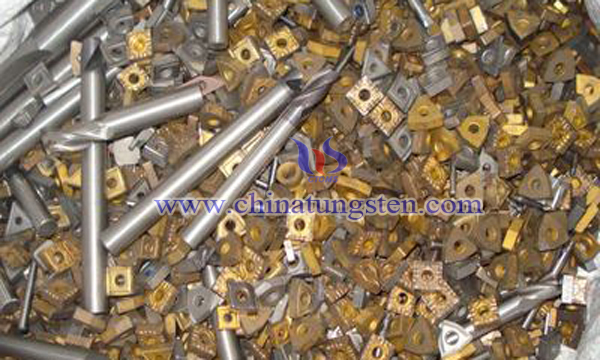Recovery of Tungsten and Cobalt Waste by Acid Pickling
- Details
- Category: Tungsten Information
- Published on Monday, 18 June 2018 19:02
Tungsten and cobalt are important additives in hard alloys. With the rapid development of hard alloys in China, the contradiction between tungsten and cobalt resources and the increasing demand is becoming more and more obvious. The recycling of tungsten and cobalt resources has been paid more and more attention. At present, most of the recovery of tungsten and cobalt from the waste hard alloy is made by electrolysis. The source of raw materials is limited and the price is high. The economic benefit of tungsten carbide is limited by purchasing tungsten carbide.

In order to improve the recovery rate of tungsten containing waste, researchers have proposed a recycling method. The specific preparation steps are as follows:
(1) Ball milling
The tungsten and cobalt waste is added to ball mill to 80~100 mesh at a mass ratio of 1:1, which is beneficial to the dissolution of metal impurities in acid washing process.
(2) Pickling
With the mass fraction of 30% hydrochloric acid at 75~90 ℃, the metal impurities in the tungsten cobalt waste are dissolved and mixed with water, pH is controlled in 1.5 to 2, and the reaction is 2 ~ 3H, in order to dissolve the metal impurities fully, add a certain amount of nitric acid as a catalyst, add edible oil as a defoaming agent, and continue to react to 6 to 8h, and because of tungsten carbide. It is not allowed to hydrochloric acid, so the tungsten carbide will precipitate in the form of precipitation.
(3) Pressure filtration, washing and drying
After pickling, the upper layer liquid is removed and the lower layer is pressed and filtered. The filtrate is made of tungsten carbide, and the tungsten carbide is washed with water for 3~4 times. The purpose is to clean the hydrochloric acid and dry, then dry, the drying temperature is 50~100, the thickness of the material is 3 ~ 5cm, and the baking time is 3 ~ 5h.
(4) Copper removal
Adding pure alkali to the acid lotion, the pH is controlled at 2 ~ 2.5, the temperature is controlled at 80~100 C, and the iron powder is added to make the copper be reduced to the single copper, and the copper slag is filtered after 2 ~ 4H.
(5) Iron removal
With the addition of sodium sulfate, hydrogen peroxide and soda, the pH is controlled at 2.5 to 3, the temperature is controlled at 75~85 C, the iron is precipitated with sodium yellowish iron vanadium, and iron slag is filtered after 2 ~ 4H.
(6) Sulfur removal
Barium chloride is added to the iron removal solution, and sulfate ions are precipitated and pressed.
(7) Evaporation and concentration
The filtrate was pumped to a graphite crucible for evaporation and concentration, and the temperature was kept at 80~100 ℃.
(8) Cooling crystallization
When the specific gravity of the solution reaches 120 ~ 150g/L, the crystallization temperature is 30~45 ℃ and the crystallization duration is 6 ~ 8h.
Compared with the existing technology, the above-mentioned parties have realized the recycling of W-Co waste. The whole process has realized the zero discharge of waste water, and effective treatment of waste gas, friendly to the environment, rich in raw materials, high added value and high economic benefit.
- Tungsten Manufacturer & Supplier, Chinatungsten Online: www.chinatungsten.com
- Tungsten News & Prices of China Tungsten Industry Association: www.ctia.com.cn
- Molybdenum News & Price: news.molybdenum.com.cn
- Tel.: 86 592 5129696; Fax: 86 592 5129797; Email: sales@chinatungsten.com



 sales@chinatungsten.com
sales@chinatungsten.com